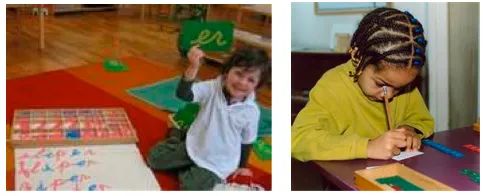Should Children Still Learn Cursive Handwriting?
Déjà school?
Parent teacher conferences were different this year. I’m not sure if it was because I live in a more metropolitan area than I used to, or because my child is now in Middle School and has seven teachers. Whatever the reason, my son’s parent-teacher conferences went something like this: parents attended ten-minute group “classes” with each of their child’s teachers. At the end of the ten-minute session, the bell rang and we all scurried to find the next classroom. As you can imagine, this brought back some old, first-day-of-school memories for me.
Me: Excuse me. I can’t seem to find room number 401.
Them: Here, it would help if you turned the map right side up.
Me: (Blushing) Oh, right, thank you.
But I digress.
One of the teachers my husband and I met that day, was the fresh-faced young Language Arts teacher. This was her first year of teaching the seventh grade. She stood before her “class” of parents and outlined her course for the year. After listening patiently for most of the ten minutes, a woman in the second row raised her hand. “Yes?” asked Ms. Language Arts, “Do you have a question?”

“I do have a question,” answered the woman. “Are you going to teach cursive writing?”
The teacher stared for a moment. Her pretty face betrayed a glimmer of annoyance, and then her expression changed to one of genuine confusion. “We will not be covering cursive in this class,” she said. “Has your child not learned cursive before now?” The woman was silenced. The teacher's tone had made it clear that she expected children to have mastered cursive writing well before the seventh grade.
My husband and I glanced at each other. We were both thinking the same thing: our son hasn’t learned cursive either--not very well, anyway. I’ve been thinking, next year, they’ll probably teach it next year, for several years now. But, didn’t we learn cursive in second or third grade? My children had both had keyboarding class in second and third grade. Why were these children not learning cursive?
The simple, straightforward answer can be boiled down to two words: Common Core. In 2010, the Common Core Standards kicked cursive handwriting to the curb. It was decided that cursive was no longer relevant in a modern society where keyboards are king.
Aren't there benefits to writing in cursive?
"Writing is a complex act [….] one part of it has reference to motor mechanisms and the other represents a real and proper effort of the intellect."Since then, numerous studies have shown that writing in cursive is beneficial in many ways previously unknown to educators. For example, in one 2012 study, researchers concluded “…that improved handwriting skills have benefits for cognitive development and motor skills and can lead to improved writing skills and reading comprehension."

According to another study, “evidence-based research has shown that handwriting skills can increase brain activation, impact performance across all academic subjects, provide a foundation for higher-order skills, and influence reading, writing, language, and critical thinking.”
A third source tells us, “Not only does cursive activate areas of the brain that are not affected by keyboarding, but it also helps children develop skills in reading, spelling, composition, memory and critical thinking.”
Montessori sandpaper letters

Then there is Maria Montessori who, long ago, discovered the important correlation between movement of the hand and cognitive development. Dr. Montessori said, “The hands are the tools of the mind.” Montessori classrooms use tools such as sandpaper letters and the movable alphabet to teach language through movement and the senses. In her book, The Discovery of the Child, Montessori begins a chapter about the mechanism of handwriting by saying:
"Writing is a complex act [….] one part of it has reference to motor mechanisms and the other represents a real and proper effort of the intellect."
She goes on to explain that by “motor mechanisms” she is refering to the physical act of holding the writing instrument and drawing the letters of the alphabet. She knew, almost 100 years ago, that “a machine could be substituted to carry on this work…an example of this might be found in typewriters,” but that the second part, the “effort of the intellect,” could not be properly developed without the first (the “motor mechanism of writing.”)
Currently, several states are proposing bills to reinstate the teaching of cursive writing in public schools. Unfortunately, whether these bills are passed or not, we have a whole generation of American kids that will have to struggle to learn to write (and read) cursive as adolescents or adults. I think of my son as I read these words by Montessori:
I know how difficult it is to persuade twelve and thirteen-year-old boys to write whole words without lifting a pen […] and how hard they find it is to make the different letters with a single stroke and at the same time keep the lines of the letters parallel. But it is certainly true that an adult needs many months to learn what a child can learn in a single month if he has been indirectly prepared for it.
If adults could learn as easily as six-year-old children, illiteracy could be abolished in a month. But two obstacles would perhaps prevent such a brilliant success. For one thing, adults do not have that enthusiasm which is produced in children […] and which is present only during the natural constructive period when language is learned. Moreover, an adult’s hand is now too stiff to easily acquire those delicate movements necessary for writing. - Maria Montessori, The Discovery of the Child.




















